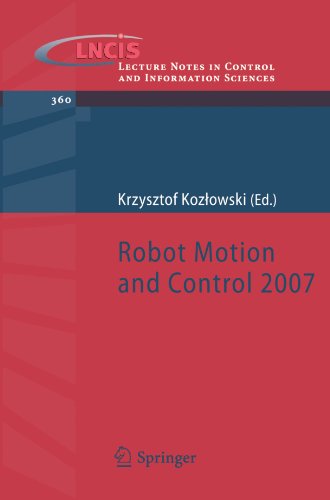

Most ebook files are in PDF format, so you can easily read them using various software such as Foxit Reader or directly on the Google Chrome browser.
Some ebook files are released by publishers in other formats such as .awz, .mobi, .epub, .fb2, etc. You may need to install specific software to read these formats on mobile/PC, such as Calibre.
Please read the tutorial at this link: https://ebookbell.com/faq
We offer FREE conversion to the popular formats you request; however, this may take some time. Therefore, right after payment, please email us, and we will try to provide the service as quickly as possible.
For some exceptional file formats or broken links (if any), please refrain from opening any disputes. Instead, email us first, and we will try to assist within a maximum of 6 hours.
EbookBell Team

4.4
72 reviews
ISBN 10: 1846289734
ISBN 13: 9781846289736
Author: Krzysztof R Kozlowski
Robot Motion Control 2007 presents very recent results in robot motion and control. Forty-one short papers have been chosen from those presented at the sixth International Workshop on Robot Motion and Control held in Poland in June 2007. The authors of these papers have been carefully selected and represent leading institutions in this field.
robot motion control
robot modeling and control 2nd edition pdf
robot modeling and control 2nd edition
robot motion planning and control
robot modeling and control 2nd edition solutions
Tags: Krzysztof R Kozlowski, Robot, Motion